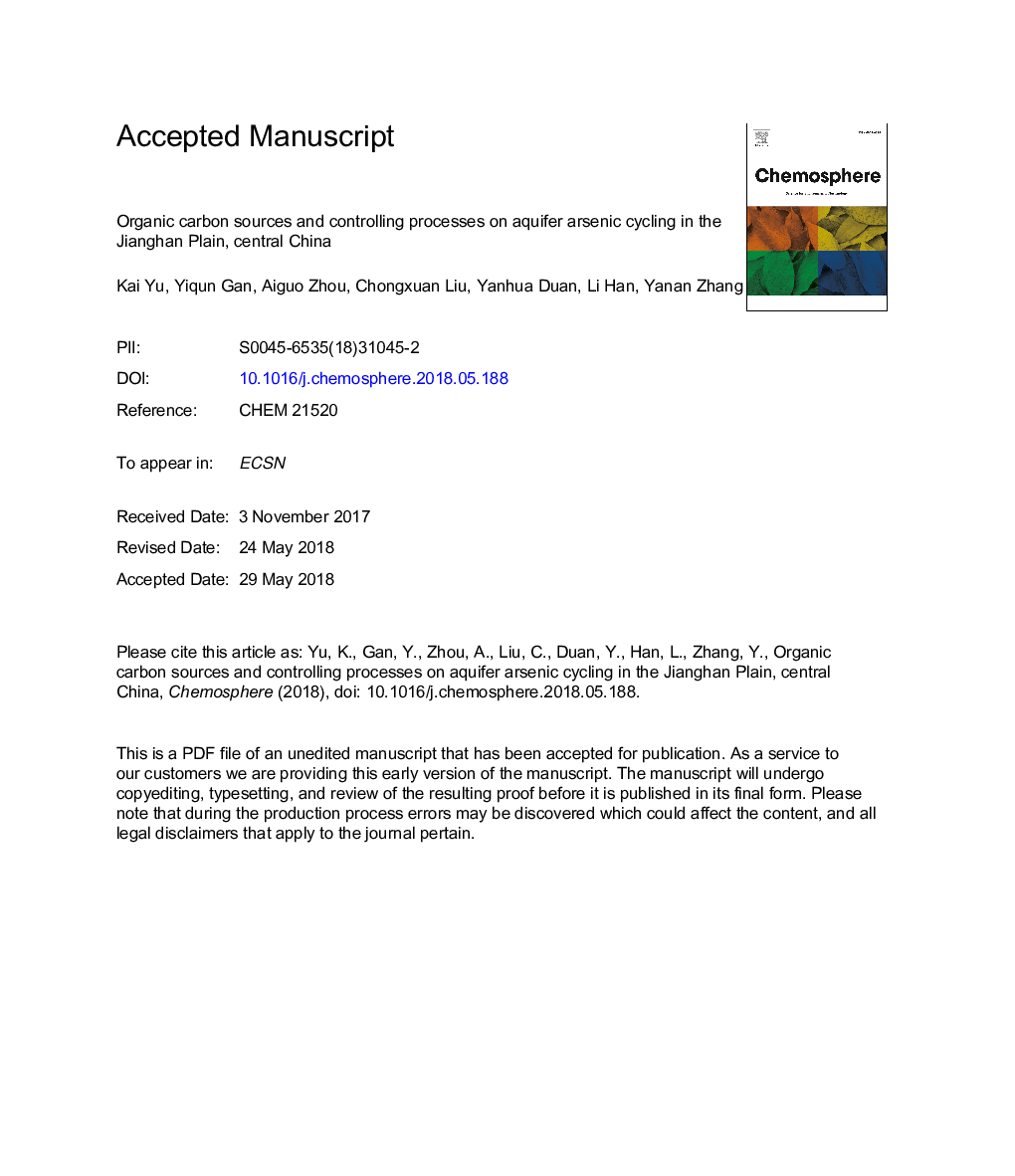| Article ID | Journal | Published Year | Pages | File Type |
|---|---|---|---|---|
| 8850698 | Chemosphere | 2018 | 27 Pages |
Abstract
Groundwater arsenic contamination is a common environmental problem that threatens the health of over 100 million people globally. Apparent seasonal fluctuations in groundwater arsenic concentrations have been reported in various locations worldwide, including the Jianghan Plain, central China. This phenomenon has been attributed to shifts in redox conditions induced by seasonal incursions of surface water. However, it is not clear what processes during the incursion lead to changes in the redox conditions and what is the source of the organic carbon driving these processes. Therefore, we conducted a long-term investigation of stable carbon isotopic compositions in surface water and groundwater, as well as long-term monitoring of hydraulic gradients and geochemical compositions at the Jianghan Plain. Results indicated that a series of biogeochemical processes occurred during surface water incursion, including aerobic microbial respiration, nitrate and sulfate reduction. Groundwater arsenic was removed by adsorption on iron oxyhydroxides produced during oxidation of ferrous iron, resulting in dramatic decreases in arsenic concentrations during surface water recharge seasons. These processes were likely driven by organic carbon vertically transported from surface water and released from the surficial aquitard above 15â¯m. Groundwater pumping may accelerate the vertical infiltration of oxidizing recharge water and drive exogenous organic carbon to depth. Findings of this study advance the understandings of the mechanisms that cause temporal variations in groundwater As and the importance of exogenous organic carbon that may influence the temporal behavior of arsenic in groundwater.
Related Topics
Life Sciences
Environmental Science
Environmental Chemistry
Authors
Kai Yu, Yiqun Gan, Aiguo Zhou, Chongxuan Liu, Yanhua Duan, Li Han, Yanan Zhang,
